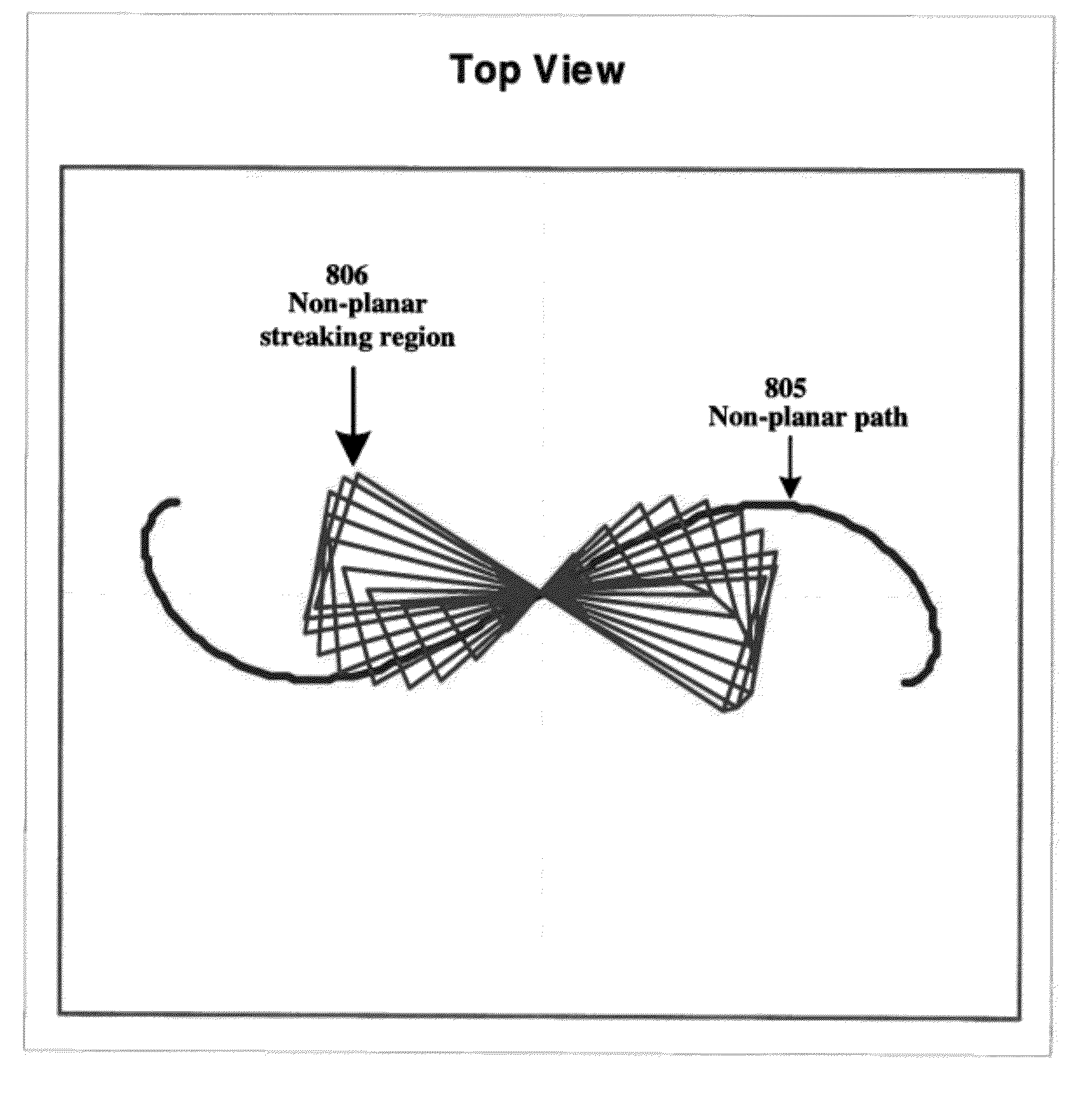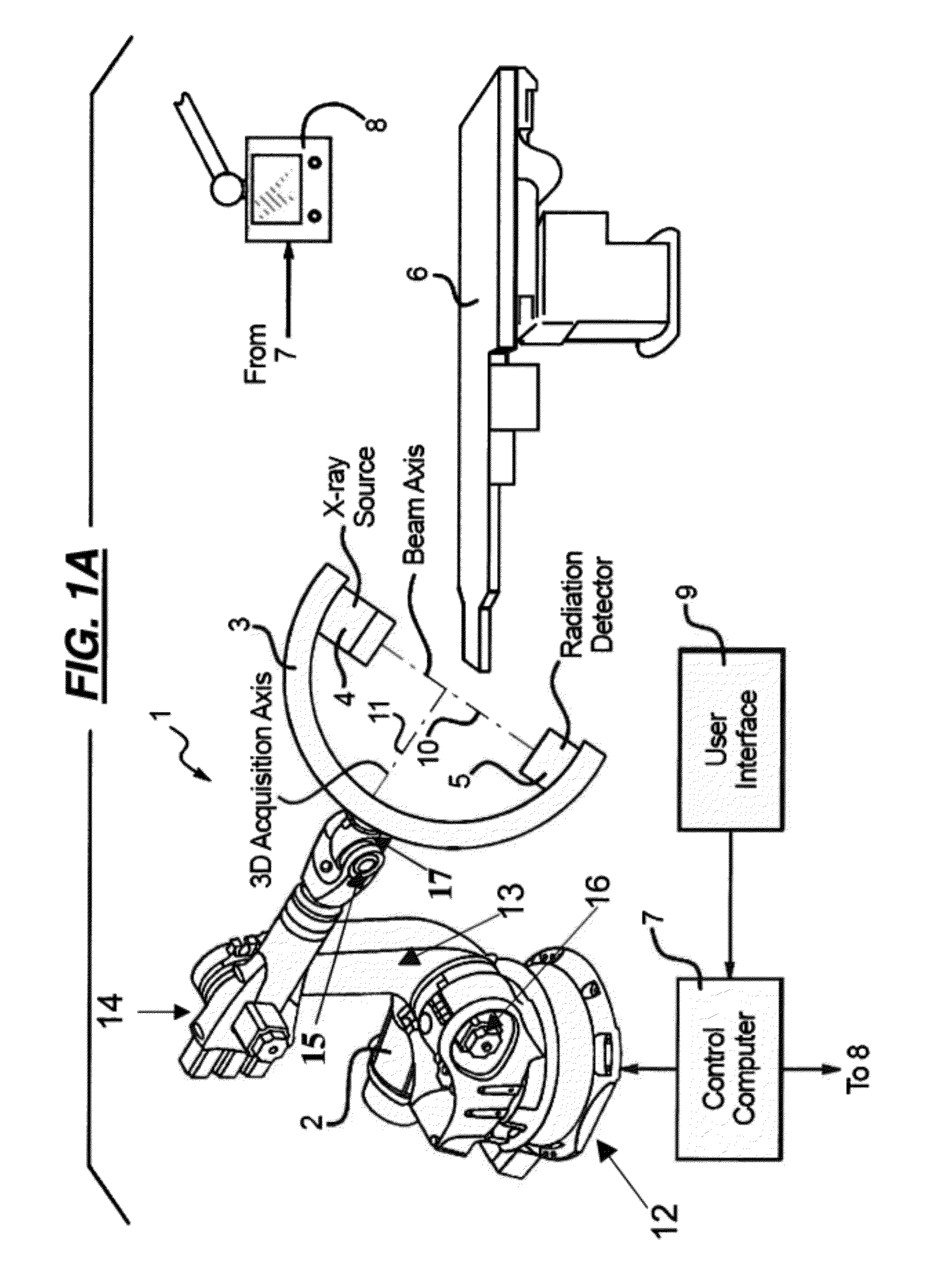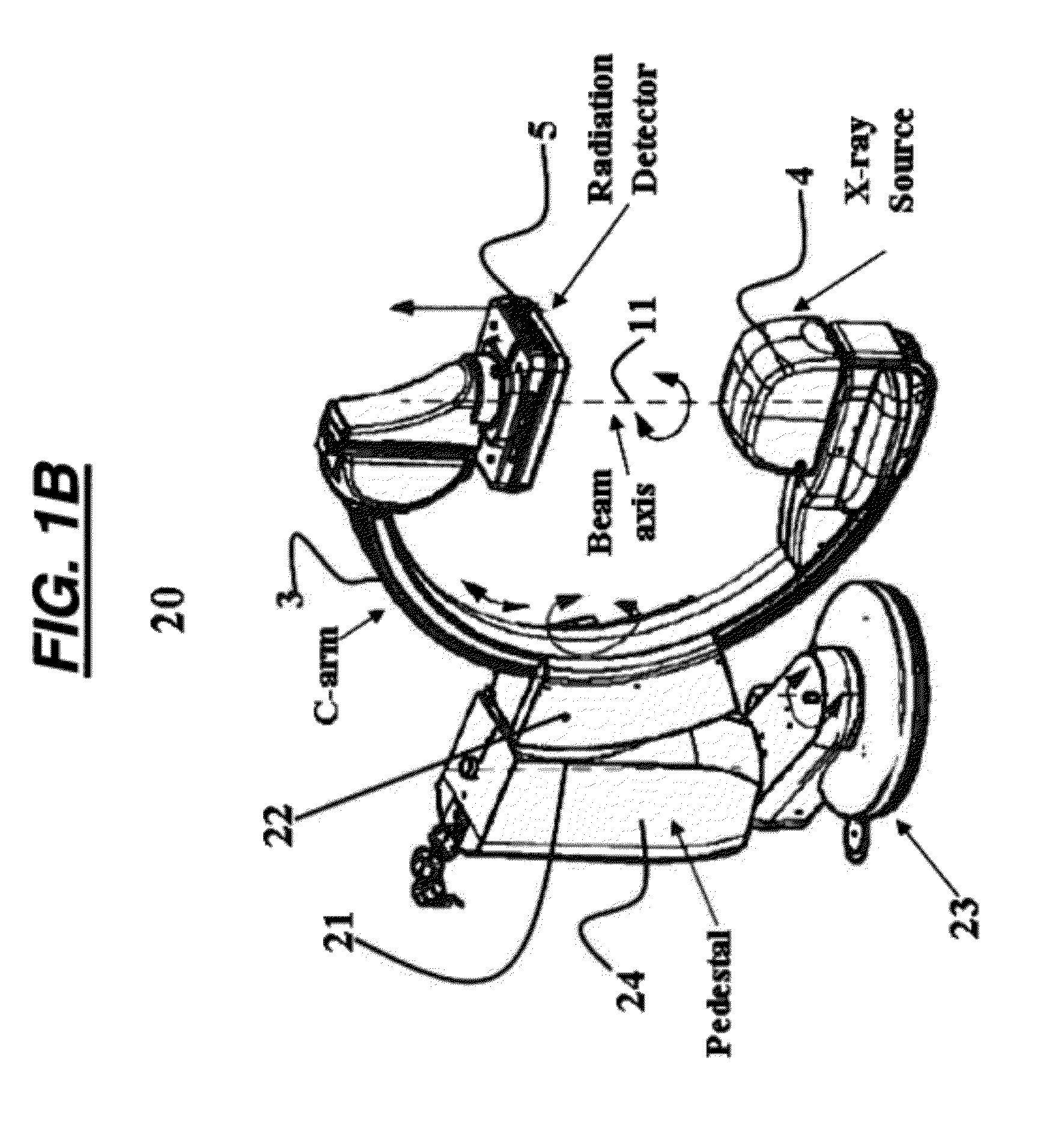System for 3-dimensional medical image data acquisition
a medical image and data acquisition technology, applied in the field of non-planar imaging data acquisition, can solve the problems of adding noise to the x-ray image data, obscuring the surrounding anatomy, and beam hardening artifacts, and achieve the effect of minimizing the introduction of metal artifacts
- Summary
- Abstract
- Description
- Claims
- Application Information
AI Technical Summary
Benefits of technology
Problems solved by technology
Method used
Image
Examples
Embodiment Construction
[0032]Known x-ray imaging systems for acquiring images of an examination subject containing a radio-opaque object produce poor quality images because of the metal artifacts introduced in the image. Radio-opaque objects are objects that do not allow x-rays or other types of radiation penetrate. Since radio-opaque objects block radiation, it is difficult to x-ray an examination subject that contains a radio-opaque object inside his / her body. Additionally, these radio-opaque objects create metal artifacts caused by beam hardening or scatter artifacts that can degrade the quality of an x-ray image. Known systems shift the examination subject and / or the examination subject support to shift the primary effect of metal artifacts away from an area of interest to other areas in the image, improving image quality for a specific area. However, in these systems, the image data is acquired along planar paths. Therefore, the metal artifacts introduced in the 3-dimensional image by radio-opaque ob...
PUM
 Login to View More
Login to View More Abstract
Description
Claims
Application Information
 Login to View More
Login to View More - R&D
- Intellectual Property
- Life Sciences
- Materials
- Tech Scout
- Unparalleled Data Quality
- Higher Quality Content
- 60% Fewer Hallucinations
Browse by: Latest US Patents, China's latest patents, Technical Efficacy Thesaurus, Application Domain, Technology Topic, Popular Technical Reports.
© 2025 PatSnap. All rights reserved.Legal|Privacy policy|Modern Slavery Act Transparency Statement|Sitemap|About US| Contact US: help@patsnap.com



